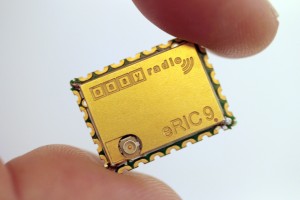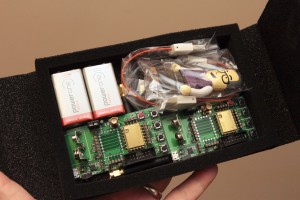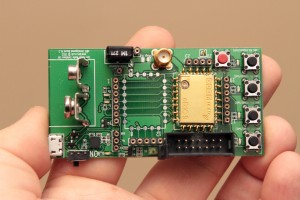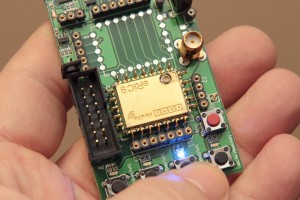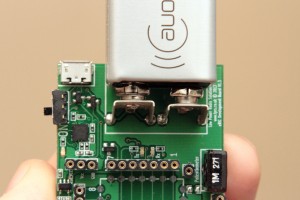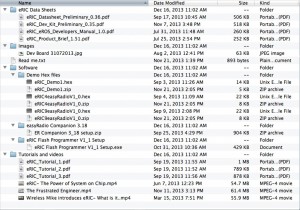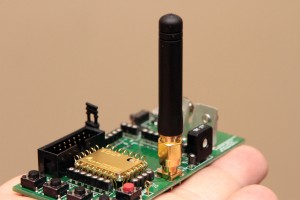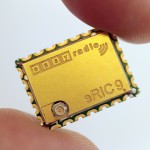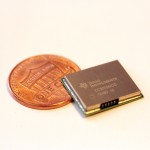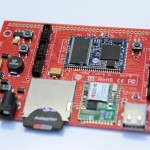This little micro… is amazing!
And the dev-kit is splendid: two dev-boards with eRIC mounted, antennas, batteries, USB cables, and a charming thumb-drive (a.k.a Wireless Mike).
Crowded dev-boards are a pet peeve of mine… IMO, this one sits well inside the Goldilocks Zone.
There are headers to jack-in to the radio, an SMA connector, JTAG, some buttons to experiment with GPIOs, A/D potentiometer, a beefy on/off switch, and a USB connector.
The high-rise connectors that cradle the castellated pads on the radio, are pure genius.
Dev-boards come pre-loaded with a clever demo that allows you to cycle through transmit, receive, broadcast, and GPIO control.
I’m being picky here… the 9v battery contacts on both dev boards were slightly offset. Given the thickness of the connectors and the amount of solder needed to hold them in place, adjustment might require a pair of pliers. No big.
Yep… that’s the best I can do for finding something to complain about.
The thumb-drive comes loaded with lots of goodies: videos explaining the platform, datasheets, code samples, tutorials, and configuration software. Everything you need to get started.
This is where it gets good… really good.
Low Power Radio Solutions took a long hard look at the Arduino ecosystem, and saw the value in abstracting low-level hardware control. The radio module runs eROS, which exposes a rich API for controlling every aspect of the CC4305137 wireless transceiver.
It’s really quite amazing.
So… here’s what you get:
- CPU speed control (runtime)
- RF data rates to 500kbs
- AES 128 bit data encryption
- 250 byte radio buffer
- 256 bytes of EEPROM
- 2K user RAM
- 18 GPIOs
- UART
- SPI (pin configurable)
- A-D
- temperature sensor
eROS takes up ~16K of the 32K available on the SoC… leaving the other half for your application(s). However, it is possible to wipe the IC and use the entire space for specialized application(s).
Yes, it’s hacker friendly.
Modules come in 433 and 868 MHz (UK and Europe) as well as 315 and 915 MHz (USA) flavors that meet ETSI (Europe) and FCC (USA) requirements.
SOURCE: Low Power Radio Solutions

